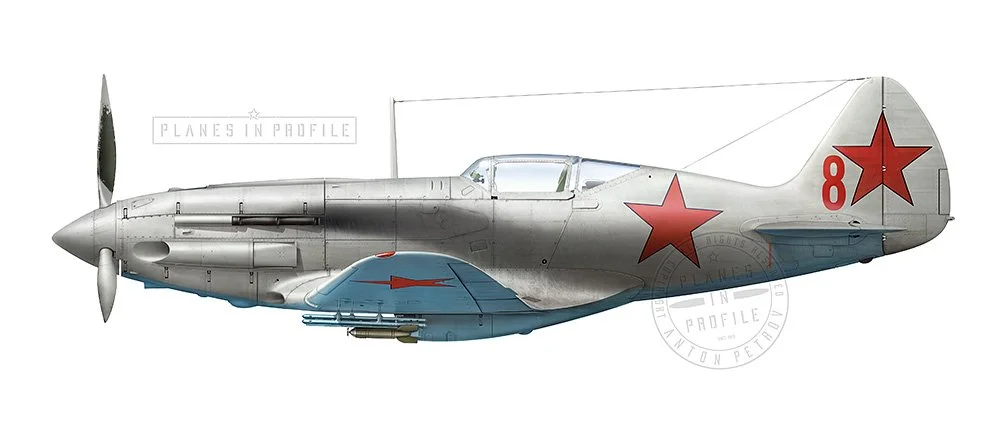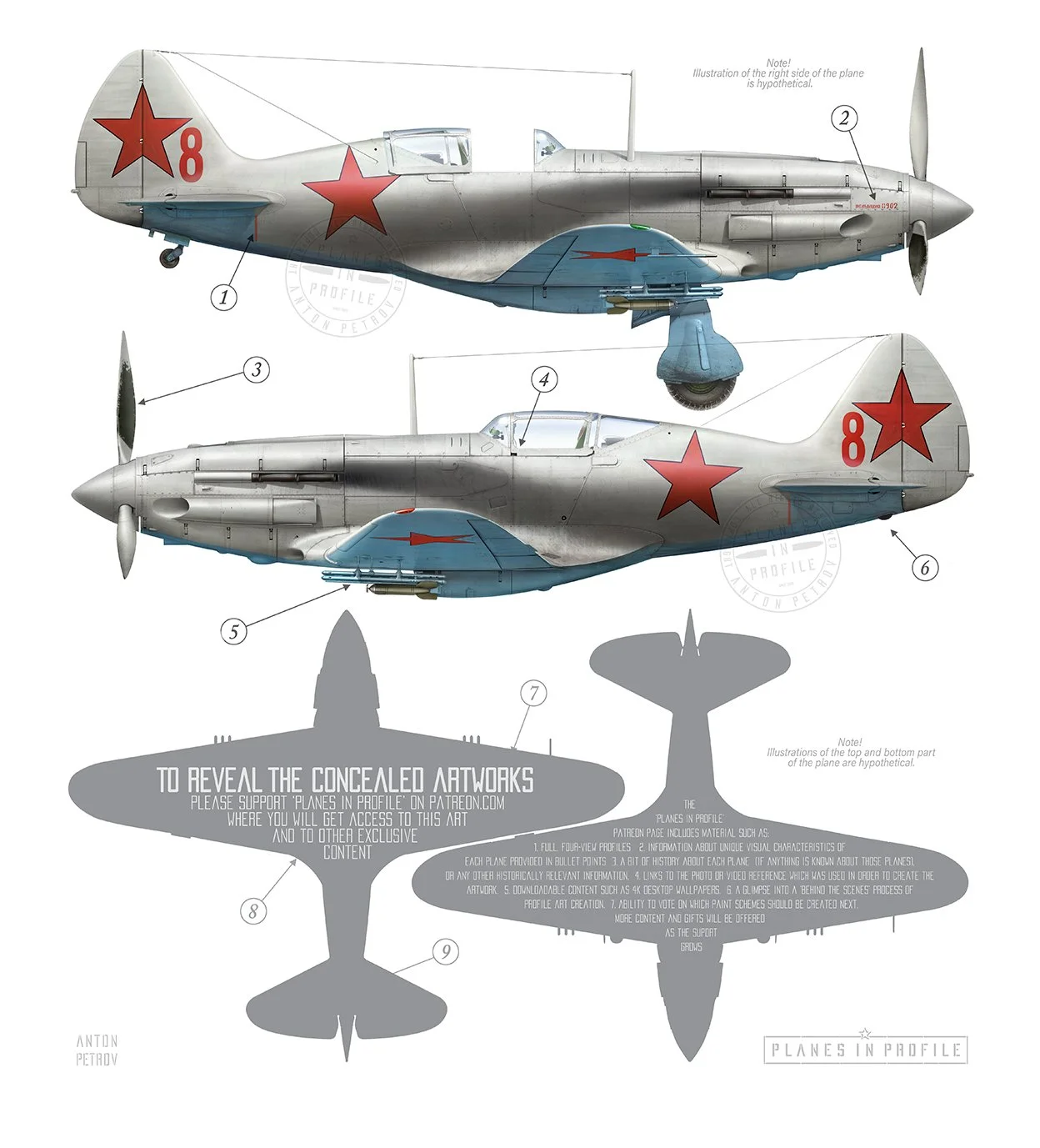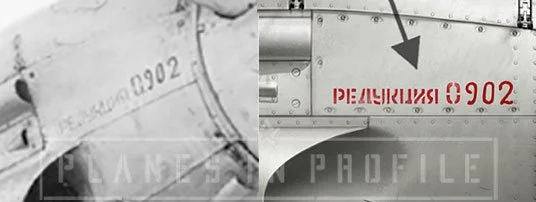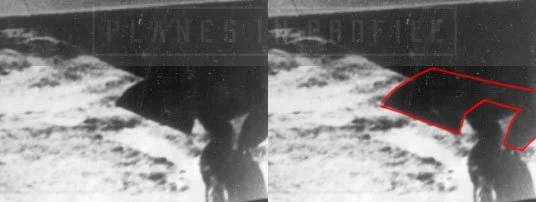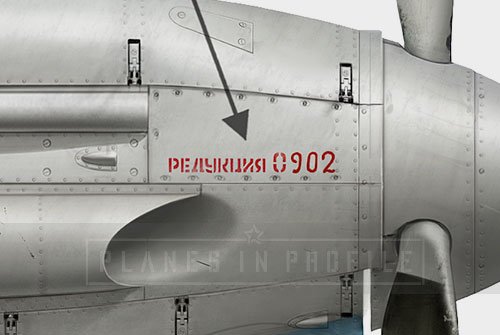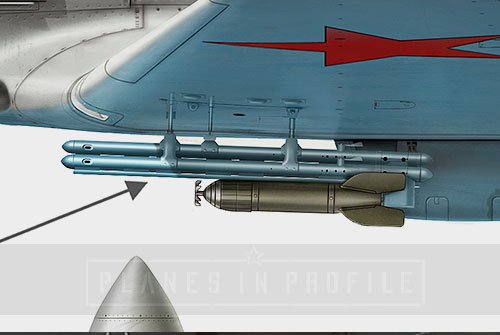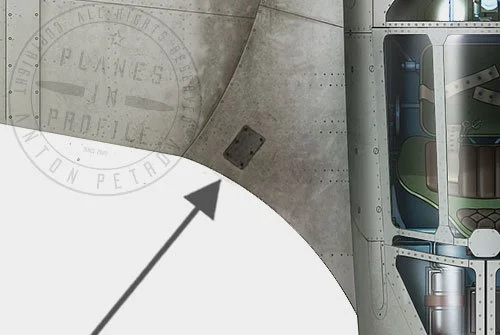Red-8
MIKOYAN & GUREVICH, MIG-3
27-th IAP, 6-th IAK PVO, Moscow zone PVO, winter 1941-1942.
Flown by the deputy squadron commander and a commander of a flight, Hero of the Soviet Union (From March 1942), Lieutenant Vasiliy Nikolaevich Matakov (a pilot with 7-8 air victories, 2 personal and 5-6 shared),
As well as various other pilots of the 27-th IAP.
Vasiliy Matakov fought in the Great Patriotic war from the start, in June 1941. Some of the most intense moments of the war for Matakov occurred later that year during the vicious battles to defend Moscow. But Matakov’s poise and skill as a fighter pilot always helped him to come out of a difficult situation, and on a few occasions to do so with a victory. For these skills, the command of the regiment entrusted him with the most important combat missions. It is during those difficult battles to defend Moscow in winter of 1941-1942 that Matakov is thought to have flown the Red-08, MiG-3. He flew 230 battle sorties and engaged in 16 air battles in the skies of Moscow and shot down 2 airplanes personally and 6 in a group.
“A particularly good battle,” recalled Vasily Nikolaevich , “was over Khimki. We were 7 combat crews. Patrolling between Khimki and Kryukovo, we noticed 6 Me-109s. It was in November. They were higher and, obviously, also spotted us, as they immediately went on the attack. There was a jousting match. After the first attack, we set fire to 2 planes. They could not withstand this and began to leave. We brought down 2 more." [1]
One day, 6 aircraft of the regiment, led by Captain V. A. Ivanov, entered into an air battle over Kalinin with 17 fascist fighters. “The forces were unequal” , the deputy squadron commander Lieutenant A.F. Kovachevich later said in his memoirs, “the battle was hot, there was enough work for the six of us”. We fought as long as there was fuel and ammunition. In this battle, I shot down one Me-109 and one - V.N. Matakov. Feeling that we were running out of fuel, Captain V.A. Ivanov skilfully organised a way out of the battle. Our six returned to their airfield without losses.”
Apart from being a talented fighter pilot, Matakov also distinguished himself at storming ground targets. He flew 57 sorties to attack the fascist troops near Moscow and destroyed 123 vehicles with troops and ammunition, 87 wagons with goods, 5 fuel tanks, 2 enemy radio stations.
The objects of such ground attacks were usually infantry columns, tanks, vehicles, command posts, various warehouses, railway echelons. When Soviet troops launched a counteroffensive to liberate Krasnaya Polyana, Matakov and his comrades covered the ground troops, striking at the enemy manpower and equipment.
Once, behind Krasnaya Polyana, this was probably on the night of June 25-26, 1942, Matakov’s flight of MiG-3s discovered a large concentration of German troops. While attacking them, the enemy had put up a strong resistance. One of the explosions fired from the enemy’s anti-aircraft guns turned Matakov's plane over the wing. His plane was struck by flak shell fragments in 29 places, the aileron was jammed, and it became extremely difficult to pilot the airplane. Thanks to the reliable operation of the engine, the plane could still stay in the air. Having shown high self-control and courage, Matakov managed to land his wounded MiG-3 fighter without the use of the landing gear, "on its stomach" outside the airfield. Matakov received severe head and spinal injuries in the process and was hospitalised until December 1942.[2]
It is possible that the event described above occurred while flying the Red-8, and the subsequent crash landing was Red-8’s final fate, but presuming so would be a wild speculation. All that we have good reasons to suppose, based on the available information, is that Red-8 was most likely flown by Matakov during the winter of 1941-42. It is also known that the airplanes of the 27-th IAP were not assigned to specific pilots [3], therefore Red-8 was not flown exclusively by Matakov, but was also flown by various other pilots of the 27th IAP.
This is not the only time when Matakov’s MiG was badly damaged during a mission. on October 18, 1941, a number of regiments, including 27th IAP stormed an enemy airfield in the Kalinin region and disabled up to 40 enemy aircraft with combined strikes. As part of the six MiG-3s, V.N. Matakov also participated in this attack and his group shot down one BF-109 as they approached the airfield. But a shell from the anti-aircraft artillery hit Matakov’s plane and damaged the control of the elevators. At that moment, a pair of Me-109s attacked Matakov from two sides and while trying to get himself into the safest of positions, Matakov was rescued by Lieutenant A.F. Kovachevich (who later became a Hero of the Soviet Union) and was also saved by the fact that the MiG-3 had an armoured backplate which helped to protect him from the many bullets and shell fragments which pierced Matakov’s fighter from nose to tail.
For the exemplary performance of the combat missions of the command, courage and heroism shown in the fight against the Nazi invaders, by the Decree of the Presidium of the Supreme Soviet of the USSR of March 4, 1942, Matakov Vasily Nikolaevich was awarded the title of Hero of the Soviet Union with the Order of Lenin and the Gold Star medal. "
By the end of the war, senior lieutenant Matakov flew 360 sorties, took part in 25 air battles, shooting down 2 enemy aircraft personally and 6 more - as part of a group. [2]
The final fate of Red-8 is unknown.
Noteworthy Visual Characteristics
General. The airplane is painted with a standard winter camouflage, with some rather heavy weathering on it. It’s probably covered with some dust and lots of soot from the exhausts. The stars are in the usual 6 positions, two stars on the fuselage, two stars on the tail, two stars on underside of the wings. The stars probably all had a thin black outline.
1. Please note! This part of the plane is hypothetical. It's based on other planes painted in white winter camo which show a similar demarcation line between blue and white colours. The red line indicates the best area for jacking up the tail of the plane.
2. 'Редукция 0902’ (Reduction 0902), specifies the reduction in the engine gear ratio. Please note! We don’t have a confirmed photo of Red-8 from the left side, therefore the details in point ‘2’ are based on a photo of a MiG-3 from 27th IAP which may or may not be Red-8. It appears that the last three digits of the technical marking (902) are hand drawn, while the rest appears to be stencilled.
3. The back of the propeller blades seem to have been painted matt black over white (to reduce sun reflection for the pilot), with some of the black paint starting to come off.
4. There seems to be a rectangular cutout in the front corner of the sliding part of the canopy.
5. The plane might have been equipped with RO-82 rocket launch racks, with RS-82 rockets loaded onto them. This presumption is based on a photo of a MiG-3 from 27th IAP which may or may not be Red-8 (Same as in point#2). We also know that Matakov’s missions often involved ground attacks, which helps to confirm that his plane might have been equipped with rockets.
6. Retractible tailwheel. The shape of the doors seems to be that of the early type's, they seem to have a rectangular cutout in them for the tailwheel.
7. Late type MiG-3 with slats
8. The ‘foot grip’ on the left side of the wing root is blackened, possibly due to the exhaust soot/dirt. It could have been similar on the other side of the plane too.
9. The exhaust marks are very prominent on this airplane. It appears that the soot from the exhaust extends all the way to the tail section and even covers some of the horizontal stabilisers.
Here are a few closeup images to help illustrate the points above. Full set of close-up images is On Patreon
FOOTNOTES
[1] The quote is taken from http://airaces.narod.ru/all9/matakov.htm
[2] The possible date of this event, and the info about Matakov’s injuries, is taken from https://proza.ru/2017/01/09/2237 . The events described in this paragraph are based on the info from the link in [1].
[3] The statement that ‘The airplanes of the 27th IAP were not assigned to specific pilots’ is according to Mikhail Bykov (a reputable Russian/Soviet Aviation researcher).
Links To the reference image and videos
http://massimotessitori.altervista.org/sovietwarplanes/pages/mig3/red8f.jpg
Another version of the dame photo here:
All the work presented on this is page is subject to updates and revisions in the light of new information which might present itself. If you have any new information relevant to this page or disagree with anything that's presented here, then please feel free to contact me through the Planes in Profile Facebook page. Thanks:)

